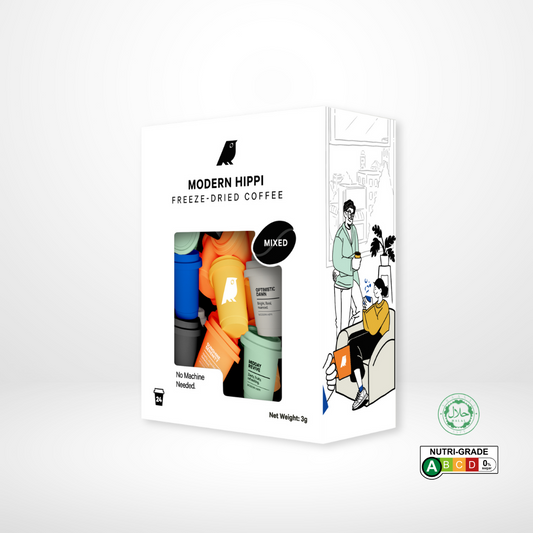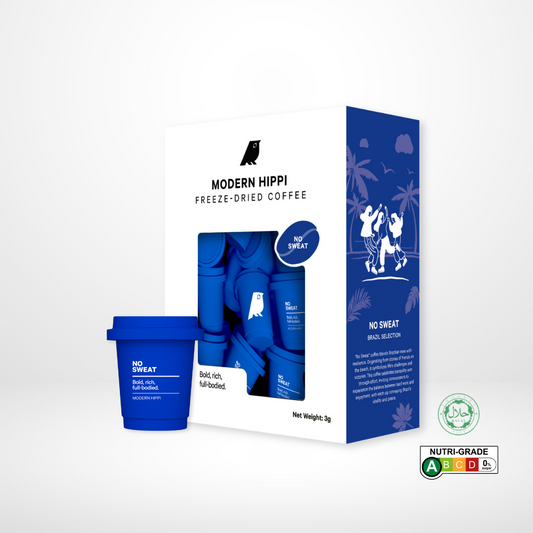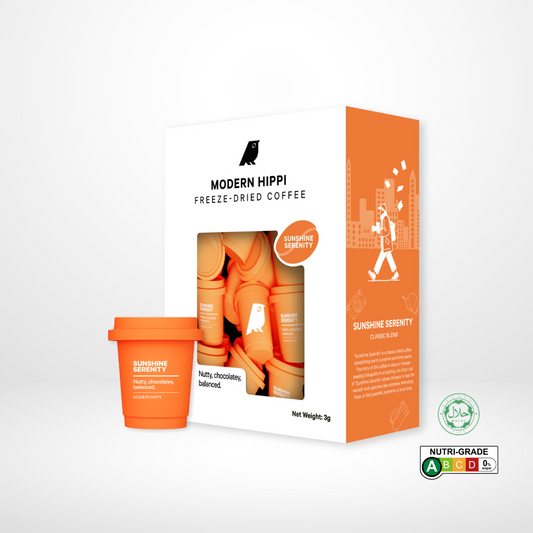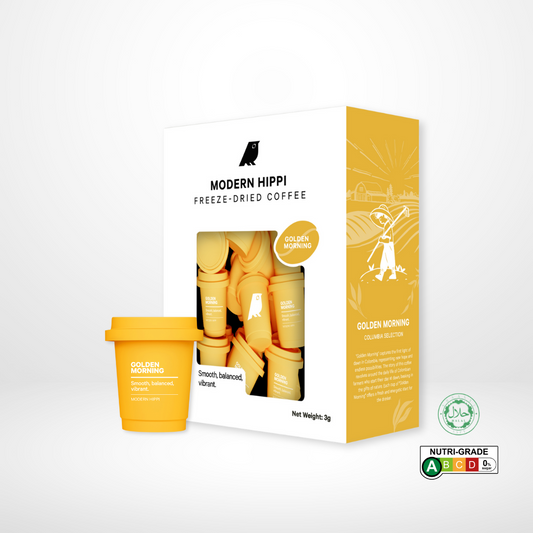Shaped by local customs, international trends, and global innovation, coffee culture has evolved around the world. Singapore, a multicultural hub known for its rich food heritage and fast-paced lifestyle, is no exception. In fact, the Lion City is experiencing a dynamic coffee evolution that mirrors global shifts while preserving distinct local traditions.
In this article, we delve into the transformation of coffee culture in Singapore and how it compares with international trends. We also explore the impact of technology, changing consumer preferences, and the rise of speciality coffee.
A Brief History of Coffee in Singapore
Singapore's coffee culture is deeply rooted in the kopitiam—traditional coffee shops that have existed for generations. The word "kopitiam" comes from the Malay word for coffee (kopi) and the Hokkien/Hakka word for shop (tiam). These humble establishments have been central to everyday life in Singapore, offering robust cups of kopi brewed with condensed milk and sugar, paired with kaya toast and soft-boiled eggs.
Kopi culture is a key part of Singapore’s hawker scene, recognised by UNESCO as an Intangible Cultural Heritage. While it remains beloved, coffee consumption patterns are diversifying rapidly, influenced by Western café trends, global exposure, and a growing appreciation for speciality beans.
The Rise of Third-Wave Coffee in Singapore
The global third-wave coffee movement—defined by its focus on high-quality beans, transparency, and craftsmanship—has made a strong imprint in Singapore. Cafés across the city-state are elevating coffee from a simple drink to an artisanal experience.
Popular spots serve hand-brewed coffees made with single-origin beans, curated from farms worldwide. These cafés often double as roasters and educators, offering workshops on latte art, cupping, and barista skills.
According to Euromonitor International, the speciality coffee market in Singapore has been growing at an annual rate of 6.5% since 2019, driven by younger consumers aged 20–35. These consumers are more discerning, environmentally conscious, and curious about sourcing, sustainability, and flavour profiles.
Statistical Snapshot:
- Singaporeans consume about 2.1 kg of coffee per capita annually, according to the International Coffee Organisation (2023).
- Over 60% of consumers aged 18–34 prefer artisanal or speciality coffee over conventional instant coffee (Statista Consumer Survey, 2023).
- The number of speciality cafés in Singapore increased by 40% between 2018 and 2023.
Blending Tradition with Modernity
What makes Singapore unique is the coexistence of heritage and innovation. You can find a kopi tiam next door to a third-wave café, and increasingly, cafés are experimenting by blending both. For example, some modern cafés serve espresso made with robusta beans, paying homage to traditional kopi, or create hybrid drinks like kopi-flavoured cold brew.
This fusion of styles caters to a diverse demographic—older patrons who enjoy traditional kopi and younger customers seeking novelty. It reflects Singapore’s broader approach to food and beverage: respect the roots while embracing the future.
Coffee as a Lifestyle Experience
Beyond taste and quality, coffee consumption is becoming a lifestyle statement. Instagrammable cafés with minimalist interiors, curated music playlists, and unique brewing methods are part of a broader shift toward experience-based consumption.
This trend isn't limited to Singapore. Cities like Melbourne, Tokyo, Seoul, and Copenhagen are redefining coffee experiences, offering everything from siphon bars to automated pour-over robots. Singapore is keeping pace, with innovative cafés offering coffee tasting flights, fermentation-forward brewing, and coffee pairings with fine pastries or chocolate.
The Role of Technology in Shaping Coffee Trends
Technology is a key driver in the evolving coffee culture. From precision grinders and temperature-controlled kettles to app-based loyalty programmes and online bean subscriptions, tech is redefining how consumers interact with coffee.
In Singapore, mobile ordering and delivery have surged post-pandemic, with apps like Grab and Deliveroo expanding their coffee offerings. Meanwhile, smart coffee machines are making café-quality brews accessible at home.
Even more impactful is the rise of digital storytelling. Cafés and roasters use social media to share the stories behind their beans—highlighting the farmers, the region, and the journey from crop to cup. This transparency builds trust and deepens consumer engagement.
Sustainability: A Growing Concern
Singaporean consumers are increasingly aware of coffee’s environmental footprint. Speciality cafés are responding with sustainable sourcing, eco-friendly packaging, and waste-reduction initiatives. For example, some cafés offer discounts for reusable cups or turn coffee grounds into compost and beauty products.
On a broader scale, Singapore’s government supports green innovation through initiatives like the Green Plan 2030. Coffee businesses that align with sustainability values are not only future-proofing but also resonating with conscious consumers.
Coffee Education and Community Building
Education plays a crucial role in sustaining coffee culture. Singapore has seen a rise in barista academies, cupping sessions, and public workshops. These events foster a sense of community and empower consumers to appreciate coffee on a deeper level.
Globally, the Speciality Coffee Association (SCA) has promoted similar efforts, offering certifications and resources to baristas, roasters, and consumers. Singapore’s coffee scene, increasingly connected to global networks, benefits from these exchanges.
Coffee Culture Beyond Singapore
The coffee revolution in Singapore is part of a larger global trend. Let’s explore how different regions are shaping their own unique coffee cultures:
-
Australia: A leader in third-wave coffee, particularly in cities like Melbourne and Sydney, known for their emphasis on quality and barista skills.
-
Japan: Merges tradition with innovation, blending kissaten (classic coffeehouses) with modern cafés that prioritise design and precision.
-
South Korea: Boasts a vibrant coffee scene, with themed cafés, chain dominance, and a growing interest in speciality beans.
-
Scandinavia: Places like Sweden and Denmark champion minimalist coffee aesthetics and slow coffee rituals, often enjoyed in cozy settings.
Singapore stands at the intersection of these influences, blending Asian heritage with global trends to create a coffee culture that is both eclectic and forward-thinking.
The Future: Convenience Meets Quality
As coffee culture matures, consumers seek not only quality but also convenience. This has given rise to innovations that make premium coffee more accessible without losing its essence. One such innovation is freeze-dried speciality coffee.
Why Freeze-Dried Specialty Coffee Stands Out
Freeze-dried technology is not new, but its application to speciality-grade beans is a modern evolution. Unlike conventional instant coffee, which often uses lower-quality beans and high-heat processing, freeze-dried coffee is made by brewing high-quality coffee, then freezing and sublimating it to preserve flavour, aroma, and nutrients.
Key Benefits:
-
Retains Complex Flavours: Maintains the original taste profile of speciality beans, including subtle notes like berry, citrus, or chocolate.
-
Ultimate Convenience: Ready in seconds—just add water, hot or cold.
-
Travel-Friendly: No need for machines, grinders, or filters—ideal for offices, travel, and outdoor adventures.
-
Sustainable Choice: Minimal waste, long shelf life, and less energy required for brewing.
Meeting Modern Needs
In cities like Singapore, where time is precious and expectations are high, freeze-dried speciality coffee bridges the gap between premium quality and on-the-go lifestyles. It aligns with consumer desires for both indulgence and efficiency.
Final Thoughts: A Brewed Identity
Singapore’s coffee culture is more than a trend—it’s a reflection of the nation’s evolving identity. As it continues to blend tradition with innovation, local with global, it sets an example of how coffee can be both culturally rooted and globally relevant.
Whether it's a cup of kopi from a kopitiam, a pour-over from a minimalist café, or a freeze-dried specialty brew enjoyed in the office, every cup tells a story. And in Singapore, that story is getting richer, bolder, and more aromatic with every sip.
References:
- Euromonitor International (2023) - Specialty Coffee Market Trends
- International Coffee Organization (2023) - Coffee Consumption Data
- Statista Consumer Survey (2023) - Coffee Preferences by Demographic
- Singapore Green Plan 2030 – Ministry of Sustainability and the Environment
- Specialty Coffee Association (2024) – Coffee Education Resources







